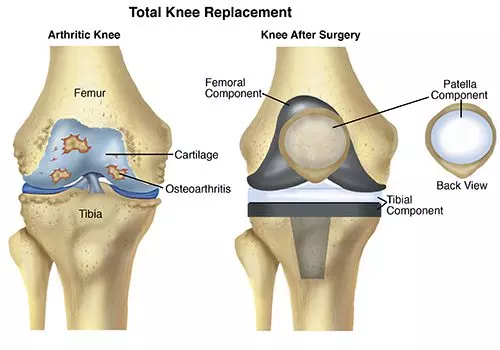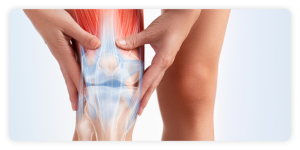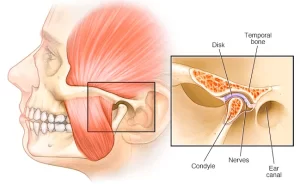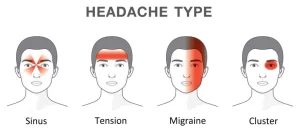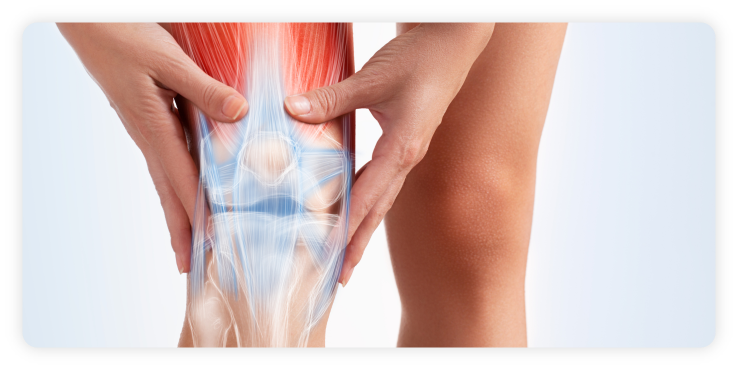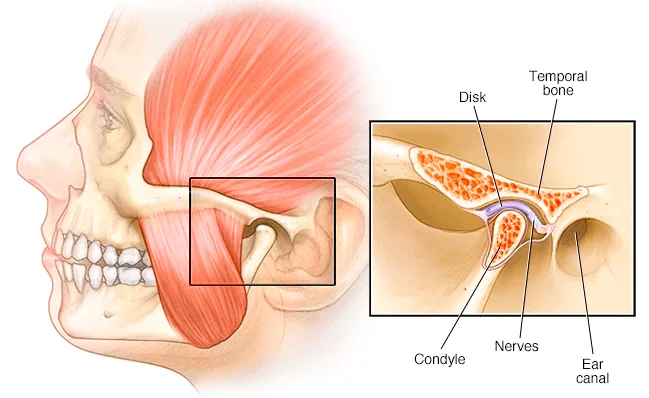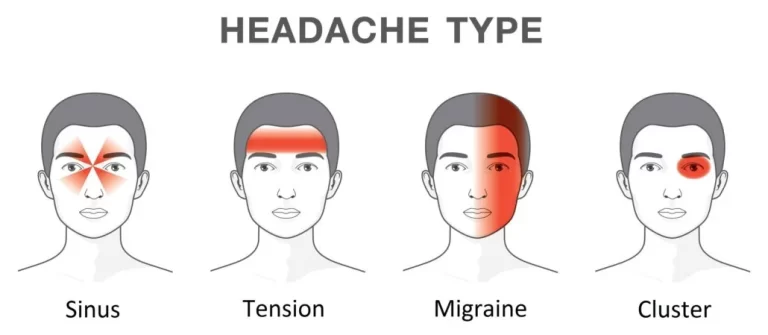Knee Replacement Rehabilitation
The knee is the most commonly replaced joint in the body. The decision to have knee replacement surgery is one that should be made during a consultation with an orthopaedic surgeon and a physical therapist. Usually, total knee replacement surgery is performed when people have knee joint damage due to Osteoarthritis, Rheumatoid Arthritis, other bone diseases, or fracture that has not responded to more conservative treatment options. Knee pain or alignment problems in the leg that cause difficulty with walking or performing daily activities which have not responded to more conservative treatment options is also another reason that leads to surgery.
A Total Knee Replacement (TKR), also known as Total Knee Arthroplasty, involves removing the arthritic parts of the bones at the knee joint (the tibia, sometimes called the shin bone; the femur, or thigh bone; and the patella, or kneecap) and replacing them with artificial parts. These parts consist of a metal cap at the end of the femur and a cemented piece of metal in the tibia with a plastic cap on it to allow the surfaces to move smoothly. When appropriate, the back part of the kneecap also may be replaced with a smooth plastic surface.
Knee Replacement Rehabilitation Benefits
The physical therapist is an integral part of the team of health care professionals who help people receiving a total knee replacement regain movement and function, and return to daily activities. A physical therapist can help prepare for and recover from surgery, and develop an individualised treatment program in the safest and most effective way possible.
The better physical shape one is in before Total Knee Replacement (TKR) surgery, the better the results will be (especially in the short term). Before surgery, a physical therapist may teach exercises to improve the strength and flexibility of the knee joint and surrounding muscles, demonstrate how to walk with assistance after the operation, prepare for the use of an assistive device, discuss precautions and home adaptations.
Seeking support from a qualified provider of physio in Singapore can help you build strength, recover faster, and move forward with confidence.
Knee Replacement Rehabilitation & Treatment
The goal of the first two weeks of recovery is to manage pain, decrease swelling, heal the incision, restoring normal walking, and initiate exercise. Following those two weeks, a physical therapist will tailor range-of-motion exercises, progressive muscle-strengthening exercises, body awareness, and balance training, functional training, and activity-specific training to address specific goals. Safe and effective range of motion exercises will be prescribed to restore movement (range of motion) to the knee. Strengthening exercises will also be advised. A physical therapist may also add agility exercises (such as turning and changing direction when walking, or making quick stops and starts) and activities using a balance board that challenges balance and knee control based on their examination of the knee. When the recovery progresses, functional training and activity-specific training will be incorporated. If in doubt, please seek professional advice.
Plan Ahead for a Smoother Recovery
Preparing your body before surgery can make a big difference in how quickly and comfortably you recover. Our physio clinic in Singapore offers pre- and post-surgery rehabilitation programmes designed to support your strength, mobility, and confidence every step of the way. With professional guidance, you can approach knee replacement with clarity and peace of mind.
Check out our popular articles: Diastasis Recti, Tight Back Muscles, Irritable Bowel Syndrome (IBS), Temporomandibular Joint (TMJ) Dysfunction, Tennis Elbow, Wrist Tendon Injury, Sciatica, Whiplash, Hernia, Herniated Disc (Slipped Disc).
